-
About
- About Listly
- Community & Support
- Howto
- Chrome Extension
- Bookmarklet
- WordPress Plugin
- Listly Premium
- Privacy
- Terms
- DMCA Copyright
- © 2010-2024 Boomy Labs


 Jack Molisani
Jack Molisani
Listly by Jack Molisani
Many thanks for everyone who voted on the 2018 LavaCon Conference on Content Strategy and Technical Communication Management, 21-24 October 2018 in New Orleans https://lavacon.org/2018/
Want to attend LavaCon? Register using the referral code Listly for $100 off conference tuition

Jess Ostroff
Director of Calm
Don't Panic Management
Over half of the workforce will be working remotely by 2020. That's less than 2 short years away! The smartest content marketers have learned that acquiring and retaining the best talent means ignoring geographic restrictions. But how do we manage these remote workers? What technology do we need to embrace? Is it possible to create a positive culture with virtual teams? Whether you like it or not, the future is virtual. Will you embrace this trend or ignore it?
This session will teach you exactly how to nurture virtual teams, how to set efficient processes and systems so nothing falls through the cracks, and what tools and tactics you need to start using so you don't lose your mind through it all.
In this session you will learn:
Jess Ostroff is a writer, speaker, and proud Director of Calm. Her company, Don’t Panic Management, is the agency that embodies a people-first approach to virtual assistant success. Since 2011, she’s been making the best possible matches between chaotic, overworked managers and focused, calm virtual assistants. It’s her goal to provide new, painless options for people to get things done as the future of virtual work becomes a reality.
Management and Professional Development
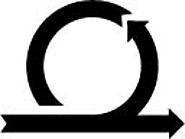
Dragana Boras
Sr. Product Marketing Manager
Atlassian
How do you make your marketing team more effective in today's digital world? Have you heard the term "agile" thrown around and wondered "does this even apply to me and my team?" If you still think that agile is only for development teams, think again. Non-technical teams are increasingly adopting it.
In this session we'll learn what the agile methodology is all about, master the art of scrum, sprints, and epics, and get to know the tools and technology needed to make agile work for you and your team. Get pro-tips from an expert who has made agile marketing a success at Atlassian so your team can focus on creating value and not just doing more work, faster! Implement key agile methodologies and put your marketing team on the cutting edge with a simple three-step process.
Dragana is the Sr. Product Marketing Manager at Atlassian where she focuses on Confluence and spreading the word on how teams can collaborate and work together more efficiently, a topic she sees as the key to any organization’s long-term success. With previous experience working for a developer tools company, she is extremely passionate about agile methodologies and applying those to every aspect of the organization. When she’s not working, Dragana is mostly likely watching a ball game or traveling.
Content Strategy
Content Management
UX/Content Experience
Tools and Technology
Agile
Convergence

Marilyn Jordan
Content Development Program Director
Translations.com
Amy Hunter
Content Development Project Manager
Translations.com
Around the World in 8 Steps: Optimizing Content for Multilingual Audiences
Global audiences? Global teams? This session draws on best practices in localization to give you practical takeaways for creating effective, global communications.
In this session you will learn:
Marilyn Jordan has over 25 years experience developing, localizing, and managing communication deliverables including eLearning, training, marketing, and technical publications. She has broad and varied experience listening for client goals, designing custom solutions to reach those goals, and successfully building teams and implementing projects for clients in a variety of fields, ranging from technology to education. She has delivered effective solutions for Hewlett-Packard, Microsoft, Intel, Pearson Education, Houghton Mifflin Harcourt, MSC Cruises, Chevrolet.com, Merck, Pfizer, and Stryker, among others.
Originally from the Bay Area, Amy’s career started in media production. After 20 years in broadcasting, she received her Masters in Teaching. She taught media production at Oregon State University for 10 years and managed CCAT-TV in Corvallis, Oregon. Her love of education and technology led her to pursue a master’s degree in Adult Education and Instructional Design. Amy now works in content development—providing instructional design, technology expertise and project management for Translations.com, the world’s largest translation company.
Content Strategy
Content Management
UX/Content Experience
Authoring
Global Audience
Convergence
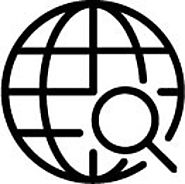
Yoel Strimling
Senior Technical Editor/Documentation Quality SME
CEVA-DSP
Do you know what your readers really want from the documentation you send them? You might think you are giving them high-quality documentation, but do your readers agree with you? Have you asked them? This talk presents data from an applied research study that proposes a preliminary, focused, clearly defined, and reader-oriented model for collecting meaningful and actionable feedback to improve documentation quality and increase reader satisfaction.
In this interactive talk, we will: Learn about a narrow yet comprehensive set of well-known and empirically tested information quality dimensions that cover all categories of quality—Intrinsic, Representational, Contextual, and Accessibility Find out how readers rate these dimensions as they relate to documentation quality Create, based on this, a measurable, unambiguous, and reader-oriented definition of documentation quality.
Get some clear, research-based takeaways that we can use to:
Yoel Strimling has been an editor for 20 years, and currently works as the Senior Technical Editor/Documentation Quality SME for CEVA Inc. in Herzelia Pituach, Israel. Over the course of his career, he has successfully improved the content, writing style, and look and feel of his employers’ most important and most used customer-facing documentation by researching and applying the principles of documentation quality and survey design. Yoel is a member of tekom Israel and a Senior Member of STC.
Research
UX/Content Experience

Sam Slaughter
CEO and Founder
Lighthouse Creative Agency
The media landscape is increasingly noisy and fragmented, which challenges our ability to create and disseminate a coherent brand narrative. This is true of content inside of companies as well—there are so many people creating and disseminating content that it’s nearly impossible to present a unifying story. Or put more simply: our brands used to be what we said they were; now they’re the sum total of what everyone else is saying.
Content provides an effective way of gaining control of a brands narrative—but as content becomes more and more the coin of the realm, breaking through the clutter is increasingly difficult.
In this talk, journalist and tech executive Sam Slaughter will discuss data-driven techniques and methodologies for making and disseminating branded content that people will actually consume—and that helps brands create a narrative that they can control.
Sam Slaughter is a content and brand strategist and author. As founder of Lighthouse Creative, he helps brands big and small execute their content strategies. He's also on the marketing lecture circuit, where he talks about the value of storytelling as a tool for companies. Before starting his own company, he was Vice President of Brand & Content at Contently and head of Contently Media. He's also written for numerous outlets, including The New York Times, NY1, and Ad Age.
Content Strategy
Authoring

Alex Masycheff
CEO
Intuillion Ltd.
Customer support is traditionally an area where the value of a chatbot can be easily measured. However, customer support chatbots are also a big challenge. Users call the customer support when they are unhappy. If the support rep (human or bot) doesn’t understand the problem, the user becomes even more frustrated. We’ll discuss why it takes people, content, and technology to build a customer support chatbot that understands user’s needs and what you should consider when building such a chatbot.
In this session you will learn:
Alex Masycheff is a CEO of Intuillion Ltd. that develops solutions for managing, automating, and delivering content. Alex has been in the content industry for over 20 years. He lead implementation of XML-based solutions in many companies, including Kodak, Siemens, Netgear, and EMC. Alex believes that a combination of structured content, AI, and NLP can provide users not only with precise answers on direct questions, but navigate them through the opportunities that the users don't even realize that they exist.

Eeshita Grover
Senior Manager, User Content
Cisco
From interviewing, to hiring, to on-boarding, and to making each one of them a success, so much rides on you—the manager.
In this session, you will learn and discuss strategies for building content professionals. We will go through key stages and milestones to be mindful of when working towards building a content team. Starting from the initial stages of hiring with the goal of building a long-term team, we will discuss ideas on what holds a team together and creates strength for one another.
Eeshita Grover is an experienced professional of 20+ years with a career equally divided across writing, teaching, and leading content creation and delivery teams. She has been with Cisco for the past 10 years building and driving innovative content strategies with an emphasis on delivery for the web, mobile web, and video. Leading a change in mindset of writing teams has been one of the key contributors to her success.
Content Strategy
Content Management
Management and Professional Development
Convergence
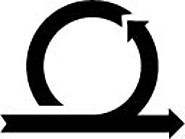
Megan Bouhamama
Head of Marketing, Confluence
Atlassian
"Done" is a well-known concept in Agile, but what does it mean for projects that don't involve shipping software? So many projects linger and take longer than they need to, because there are too many cooks in the kitchen, key approvers aren't aligned, time zones are challenging, or there is no shared sense of urgency to complete a project.
Putting your work out for critique takes courage. Getting alignment across teams can be hard. We'll share how we applied Agile best practices to keep our content project on track to completion and stop the endless conversation loop. We'll share tips to get your project there, too. We mean it: Over. Finished. No loose ends. Done.
Megan serves as head of marketing for Confluence, an open and shared workspace where teams do their best work together. At Atlassian her team focuses on go-to-market initiatives, including growth, content, and social strategies to bolster core product marketing work. After her MBA, Megan transitioned from a career in the arts to one in Silicon Valley, where she has worked in marketing for over 15 years across a range of technologies. Her motto: Never stop learning!
Tools and Technology
Agile
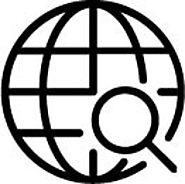
Gavin Johnston
Chief Strategy Officer
Bradley & Montgomery
To compete in an increasingly fluid marketing landscape, where every interaction is a potential a messaging platform, brands need to focus less on traditional measures and more on connecting with the culture of the audiences. Brands tend to think in terms of ROI and the success of specific campaigns or promotions. But it’s more than short sighted, it's a damned lie. Brands must identify what we term points of leverageable love by exploring the juncture between data and cultural, practices, and beliefs.
Using a case study from our Microsoft client, you will learn how to combine methodologies and collaboration techniques that get us out of the "what's the target audience" rut and actually shape a brand's role in culture and society. In a nutshell, they'll learn how to get beyond superficial understanding of an audience and get to the deeper subconscious triggers that define how people think about themselves in the world. Knowing those elements of behavior does more than sell things, it makes you a fundamental part of their lives, individually and collectively.
Gavin has been looking at what makes people tick most of his life. Over the years his curiosity about what human behavior has been the cornerstone of his work. He began his career as an anthropologist and semiotician, which quickly turned into work in strategic planning for both big and small ad agencies in San Francisco, Chicago, Birmingham, Kansas City, and Indianapolis. Gavin has over 19 years advertising, brand consulting, strategic planning, and consumer research experience.
Research
Tools and Technology
Global Audience

Benjamin Curry
Principal Writer, Infrastructure
Salesforce
Alex Dimitropoulos
Staff Technical Writer
Salesforce
Even well-functioning teams can become silos, and an executive's job is to break down walls so teams can accomplish company goals together. But how can executives inspire employees when they spend 90% of every workday in meetings—and the remaining 10% sprinting to those meetings? To get their voice out there, an executive often needs a communications and subject matter expert to assume it. Who better to do that than a doc writer or manager?
In this session you will learn:
Benjamin is a principal technical writer on one of Salesforce's internal content team. Passionate about breaking down silos to better enable teams to achieve their business goals, he spends his working hours reading and writing strategy documents, blog posts, and creating diagrams that describe the Salesforce infrastructure and the products it supports. He is a founding member of the Salesforce infrastructure blogging editorial board, and when he isn't working he's in the mountains on skis or in hiking boots.
Alex is a staff technical writer on the Salesforce InfraEng Doc team. He broadcasts infrastructure developments to the Salesforce engineering organization through newsletters, blog posts, and other marketing material. He also makes logos, icons, and infrastructure diagrams; co-leads a weekly, Salesforce-internal series of writing tips; and creates content that helps Salesforce engineers get the hardware that they need to run their services. When he isn't working, he likes searching for records, new-to-him coffee shops, and loukoumades (Greek donuts).
Content Strategy
Management and Professional Development
Outside the box!
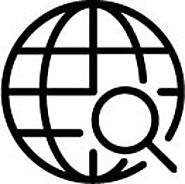
Marilyn Woelk
President
Wingz Creative & Technical Group, Inc.
All companies must make changes. Those changes may be threatening to employees, but necessary for the company's survival. In order to mitigate employee fears and resistance to change, companies create "formulas" and methodologies for managing change factors and disseminating information about upcoming changes throughout the company. The problem is that human reactions regarding change can be unpredictable. In this session, we will explore how to turn even unpleasant change into an art when the formulas for change aren't producing results.
Ways to measure the extent of a change Methods for assessing employee resistance to the change Critical tips regarding the change "messaging" employees need to receive during periods of change What to distribute to help educate and communicate with employees during change Ways to create raving fans in spite of painful change requirements (case study) How to create a 97% customer satisfaction rating for change initiatives Ways to create and manage change globally (case study) Methods for managing change remotely Ideas for how to complete change initiatives using changing resources How to measure the success of change management initiatives while they are in progress. What to do when your change initiatives change because of new changes. (Ch-ch-ch-ch-changes...Turn and face the strange)
Marilyn is the owner/president of Wingz Creative & Technical Group, Inc. She specializes in business and communications consulting; change management; process improvement; and project management for marketing, training, and documentation projects. Her clients have included Xerox Corporation (Preferred Vendor, HR Change Management Communications Lead), Johnson & Johnson, Fujifilm USA, and others. She is a frequent speaker at conferences on subjects related to content management and ROI. In 2017, she was named by MindTouch as a Top 200 Content Experience Influencer.
Research
Tools and Technology
Management and Professional Development
Convergence
Outside the box!
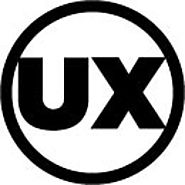
Pritha Shivaji
Senior Documentation Manager
Cisco Systems
Rashmi Ramaswamy
Information Architect
Innovatia
Cisco listens to our customers and want to make them successful. With our help site getting around 100,000 views a day (including negative feedback), this was a great opportunity to improve the experience. Everyone involved in the customer journey (from product development, to marketing, sales, training, support, and localization) came together to work on a fix. Join us as we relive our adventure merging content from teams on 3 different websites, into a single content experience for our customers.
In this session you will learn:
See version 1 of the site in action! We may not have nailed it yet.. but we’re definitely making progress. We’d like to share our experiences, what worked and what did not. So wherever you are in your own journey, you’ll avoid some of the mistakes we made, and look forward to an improved customer experience.
As Sr. Manager for content at Cisco, Pritha leads the content strategy and creation team for Cisco’s Collaboration suite of products. Rising through the company from a writer to manager, she has led large content organizations by embracing change and bringing business relevance to her team. With a mission to empower customers through an effective content experience, she oversees significant contribution to all phases of the customer journey while handling ongoing product and process evolution.
Rashmi Ramaswamy is a part of Innovatia’s Information Architecture team and works closely with the Cisco documentation team. Rashmi has a varied experience – support, training, tech pubs, project management, and information architecture. Her experience working with different teams helps her bring the best practices from each team to achieve a common goal – customer satisfaction.
Content Engineering
UX/Content Experience
Structured Authoring
DITA
Convergence

Elena Ontiveros
Content Strategy Manager
Airbnb
Messaging is changing how, when, and where people talk to their favorite businesses. With technology that automates transactions, customer service and conversations like never before, how do you create a user experience that also feels human?
Elena Ontiveros is a content strategist who defines best practices for businesses who build bots and messaging driven interactions. With 18 years of experience writing for consumer brands in entertainment, gaming, and education, Elena now helps technology sound and feel more human. Born and raised in Chicago, Elena currently lives in San Francisco and spends her free time volunteering at the local animal shelter, getting lost on hikes, and planning her next vacation.
Content Strategy
Emerging Technology

Ron Zwierzchowski
Senior Manager, Product Documentation Development
Ciena
Susanna Carlisi
Content Strategist & Tools Specialist
Ciena
Were you at LavaCon 2017? Did you see the FrameMaker-based toolset underlying Ciena’s customer-driven migration to DITA? Automated conversion of unstructured content to DITA is a neat trick and takes minutes, but is only part of the puzzle. There are other moving parts. After reviewing toolset and methods, you will learn how we applied toolset and methods to support a writing team in creating and managing content with the same rigor as is applied to SW and HW.
You will learn how we:
Ron began a career in Technical Publications at the top. His first piece of technical documentation described octal machine language codes for a Digital Equipment Corporation PDP-5. Since then he has been downwardly mobile, working in large corporations and small startups. Today, he enjoys the carefree life of a documentation manager, specializing in end-to-end product document development and publishing. His primary focus is improving the lives of technical writers, as he understands the direct link to superior customer user experience.
Susanna is a Documentation Tools manager at Ciena. Serving as both a technical communicator and tools manager for most of her 17 years at Ciena, she has an in-depth view of end-user documentation requirements and writer processes. Susanna manages and supports all tasks related to authoring tools setup and maintenance, authoring standards, and publication/single-sourcing processes. Susanna has been a key player and valuable asset during the transition Ciena has made to a DITA XML environment.
Content Engineering
Tools and Technology
Agile
DITA

Theresa Rogers
Senior Technical Writer
Oracle | Opower
Dark forces are on the rise at Opower as 40,000 pages of random wiki content and team silos threaten to doom the operational success of client services. But all is not lost! Cries of anguish reverberating through the universe summon two knowledge managers to this most worthy mission: to thwart ultimate destruction by creating a centralized, scalable wiki solution that creates positive organization change, empowers cross-team collaboration, and delivers ROI for stakeholders with the metrics to prove it.
In this session you will learn:
Theresa Rogers is a Senior Technical Writer on the Oracle Utilities Knowledge Management Team, where she works with groups across the organization to design and implement content strategy solutions that help their teams succeed. She joined Oracle in 2016 as part of the Opower acquisition, and has more than ten years of experience implementing technical communication and content strategy solutions.
Content Strategy
Content Management
UX/Content Experience
Authoring
Tools and Technology
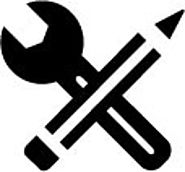
Matt Armstrong
Director of Vertical Solutions
Author-it
Collaboration between product or operations and training departments to make content reusable are goals shared by many organizations. Different tools, workflows, personalities, and methodologies makes this harder to achieve than expected. If you are a content developer, team leader, or product or operations manager in an organization that provides both training (classroom and/or elearning) and documentation, you should join this session to enable you to move conversations beyond tools and timelines, avert acrimony, and feel confident in making pragmatic compromises.
This presentation will draw on case studies from cross-team collaboration projects from organizations in a number of industries.
The case studies will focus on:
1) How to identify possible high value/low risk projects, 2) validating the goal setting process, including executive, management and the users, 3) defining the project correctly to improve success 4) change management in the field, 5) technical and process examples from these clients.
The session provides Q&A time for participants to dig into further detail on the case studies, or apply the examples and learnings to the situation in their own organization. At the end of this session participants will have a framework to pragmatically validate cross-team collaboration and reuse opportunities within their own organization. This includes an improved questioning process of why teams create content, when collaboration between teams should be a priority, and what goals/outcomes could be realistic and valuable.
Matt brings over 15 years of successful channel development experience and is responsible for driving growth and strategy into key markets. A member of the Author-it team since 2006, Matt's been at the forefront of many key projects in North America and Asia Pacific, helping multi-national organizations achieve faster time-to-market and dramatically lower their costs . Prior to Author-it Matt ran a successful eLearning consultancy, working with organizations to understand and support their change management challenges when adopting new technology.
UX/Content Experience
Authoring
Tools and Technology
Content Strategy

Stanley Doherty
Senior Director, Information Architecture
Oracle Corporation
How do we nurture resilient technical leadership in the face of competing priorities to consolidate standards and to respond to incessant disruption? If we promote skills to support the successful consolidation and maintenance of standards, we risk developing unresponsive, brittle standards. Optimizing for unmanaged innovation compromises the very standards we seek to maintain. Resilient technical leadership recognizes the role of disruption, clarifies its role relative to current standards, and articulates integration strategies between the standard and valuable disruptions.
Practical strategies for training teams of leaders (managers and architects) in the art of maintaining standards in the face of considering disruptive technologies and processes.
Stan currently manages content strategy and information architecture in the User Assistance Development division of Oracle Corporation. In previous positions he has managed content development groups, information architecture groups, and Agile development organizations at HPE, Akamai, MathWorks, Sun Microsystems, and Lotus Development. Stan is also a founding member of the OASIS DITA Technical Committee and secretary for the OASIS DITA Adoption Technical Committee. Stan is a certified Agile Scrum Product Owner and evangelist for iterative, agile standards development.
Content Strategy
DITA
Agile
Management and Professional Development
Outside the box!

Igal Levy
Technical Writer
Salesforce
Information overload is exasperated by information source overload. Having too many internal sources of information causes employees to waste precious hours searching for answers in too many different places. Everyone needs answers fast, but feels like they're lost in an information jungle with no way out. This wastes precious time, creates unnecessary work, and raises employee frustration levels. Is there hope? There is, if you apply a few simple principles to how your organization manages its sources of information.
You'll learn how to:
We'll learn by exploring recent experiences at Salesforce, where there were 15 sources of information an engineer might search to answer a question. That was an unhappy situation for everyone. On the authoring side, too many choices are available for publishing information, and that too was confusing. Salesforce has a very large engineering group, and getting at the right information quickly is critical for projects to proceed on schedule. We'll see how this group met the challenge and implemented an effective long-term solution. We'll look at the process they used, the principles they applied, and best practices they continue to follow.
Igal has over 20 years of experience in content creation, content management, and information architecture. From websites to wikis, content management applications to structured authoring, Igal has authored, designed, and helped build content environments for Salesforce, Cisco, Visa International, and a multitude of high-tech startups. He has managed small, agile teams in fast-paced environments aimed at delivering effective solutions to challenging problems. Igal takes pride in also being a student, not just a teacher, in the ever-changing world of technology.
Content Engineering
Content Strategy
Content Management
Tools and Technology

Lynnette Simpson
Knowledge Management Officer
World Bank Group, International Finance Corporation
This case study will share lessons learned in how we were able to get our internal business clients to clean up their content and provide updated taxonomy terms for an intranet renewal project for the World Bank Group. There was a lot of crying and hand holding; but in the end, clear checklists, templates, and governance led us to success.
In this session, you will learn how to engage the business regarding content cleanup and taxonomy. Specifically, these topics will be covered: conducting the content assessment (inventory, gap analysis, audit) setting up governance explaining and developing taxonomy
Content Strategy
Lynnette holds a master’s degree in library and information science. She has spent a number of years working for international organizations, focusing on content strategy and content management. Previously, she worked for a private project management firm and taught high school English and special education.
Content Strategy

Bill Burns
Content Architect
Healthwise
You’ve carefully developed and deployed your new DITA content model, and now you’re ready to turn your writers loose in your new CCMS. Suddenly you realize that the model doesn’t account for all use cases, and your production engineers say they need other semantics to manufacture your content products. How do you juggle the requirements of your content developers and engineers while preserving the integrity of your content model?
In this session you will learn:
Bill Burns is an XML consultant and Content Architect for Healthwise, Inc. He has 24 years of experience in the technical communications and publishing tools industries, including 15 years working in the XML/CCMS space. Bill provides technical consulting and training services specializing in XML technologies, content management, XSL publishing processes, single-source process development, technical writing, and content internationalization. He currently resides in Boise, Idaho.
Content Engineering
Content Management
Tools and Technology
Structured Authoring
DITA

Lelani Prévost
Localization Manager
BMC Software
David Sommer
Director of Strategic Operations
Net-Translators Ltd.
A look at one company’s request for proposal (RFP) experience and how it led to reevaluating the RFP as a tool for selecting a translation partner. We offer insights for those looking for a language service provider (LSP) to take on a new translation effort or to replace an existing supplier. This session reviews the traditional RFP process, offers an alternative protocol to simplify your evaluation, and provides best practices for ensuring a long-term relationship (LTR).
Today’s dynamic landscape of content evolution necessitates choosing partners who can evolve with your company’s needs in a concrete manner. RFPs have long been the vehicle of choice for choosing vendors for most enterprises, but are they the most effective, and do they really meet your needs? What are the costs to your organization of the RFP, and is it worth it?
By examining a real life case of an RFP process, the participants will gain insight into how they can avoid many pitfalls. Representing both the Purchaser and Supplier, the presenters will offer a unique perspective and discuss the things that went right and those that went wrong. This session will enable the participants to evaluate holistically their potential partners without creating an RFP that, on one hand, is ineffective for your organization’s needs and, on the other hand, may exclude your ideal partner.
Lelani Prévost provides strategy and technology support to multiple business units including R&D, Marketing, and Customer Success. With a background in linguistics and writing, she, by chance, found herself on the fun side of languages. In her spare time, she enjoys volunteer opportunities and has recently joined the board of Haiti on the Rise, a non-profit that funds programs for those affected by the 2010 Earthquake and Hurricane Matthew in 2016.
David Sommer has held multiple roles at Net-Translators since joining in 2004 as a Localization Project Manager. He participates in many operational aspects but enjoys business development with its widest exposure to industry trends and innovations. An ardent baseball fan, David has a decade of experience as a volunteer youth coach in Israel and has traveled to the far-flung corners of Europe coaching in tournaments. A long suffering Mets fan, David is often heard saying “just wait ‘till next year”.
Global Audience
Management and Professional Development

Jenifer Schlotfeldt
Content Experience Architect, Content Strategist
IBM
Documentation is a key driver of customer satisfaction throughout the user journey. This case study will show how we are using metrics to help guide over 100 contributing content teams in identifying if they have the right content, and if that content is meeting quality standards.
In this session you will learn:
Jenifer Schlotfeldt is a content strategist and architect at IBM. Jenifer leads a team of software engineers and content designers that own the IBM Cloud Content Experience. Not only is the team supporting continuous delivery of the IBM Cloud Docs, but it also embraces Design Thinking practices. She is also the co-author of DITA Best Practices: A Roadmap for Writing, Editing, and Architecting in DITA, published in 2011. Jenifer and her team won a LavaCon Content Impact Award in 2017.
Content Strategy
Management and Professional Development

Brian Feltes
Manager, Information Development
CME Group
Working from our unique experience of riding the Content Development wave during the Chicago Mercantile Exchange transition from "pit" trading to screen, algorithmic, quant, and high frequency high volume execution of derivatives contracts, concurrent with seismic exchange mergers, we elucidate strategies and practices developed contemporizing this complex body of knowledge for application universally within the Content discipline.
Our Ecosystem approach:
Brian Feltes is a Content Author and Chicagoan for 25 years.
Emerging Technology

Toni Mantych
Director, Information Experience
ServiceNow
As content professionals, we have always known the importance of understanding our audiences. It can be easy, though, to fall into complacency and unwittingly rely on knowledge about our content users that may be wrong or outdated. A recent job change provided a powerful reminder that even within an industry there are important differences among users and user needs. Drawing from recent experience and examples, Toni will emphasize key things to consider to improve the information experience of your audience.
How a recent job change revealed substantial differences in user types and user information needs Important questions and areas to routinely examine in order to ensure you "keep your finger on the pulse" of your audience
In January, 2018, Toni Mantych became Director of Information Experience at ServiceNow, where she leads a large and globally distributed information development group. Before joining ServiceNow, she was Director of Content Strategy and Architecture at ADP. She has taught a variety of graduate courses in the Technical and Professional Writing program at Portland State University and speaks frequently on content strategy and customer experience topics. In September 2017, she was recognized as a Top 200 Content Experience Strategist.
UX/Content Experience
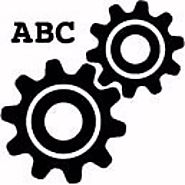
Greg Kalten
Senior Solutions Architect
VMware
Laura Bellamy
Director of Content Strategy & Operations
VMware
With rapid release cycles and agile development, we need innovative solutions for monitoring quality in real-time. Learn how VMware built a scalable content quality analysis service for product documentation, knowledge base articles, and UI strings. Hear how VMware took quality best practices in their information development group and delivered them across the company. See before/after examples of content quality, real-word data that shows business value of quality improvements, and future feature ideas to expand the service across the enterprise.
In this session you will learn:
Greg Kalten is Senior Solutions Architect at VMware. He works in the Content Strategy & Operations team to design and build innovative solutions for authoring, reviewing, and publishing content. Prior to joining VMware, Mr. Kalten spent 28 years working for various technology consulting firms specializing in enterprise solution architecture for content management and related systems.
Laura Bellamy is the Director of Content Strategy & Operations at VMware. She leads a team of content professionals who are focused on developing solutions and addressing cross-divisional content challenges. She is an experienced leader of information development teams, a former information architect, and she is co-author of the book DITA Best Practices.
Content Strategy
Content Engineering
Tools and Technology
